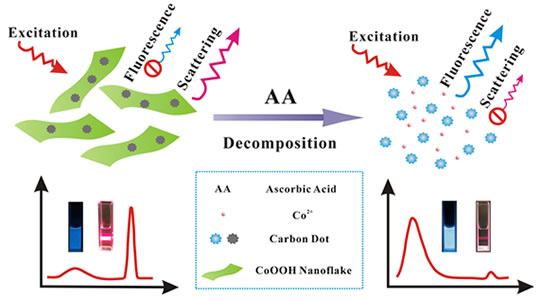China has made important progress in resonance scattering and fluorescence analysis research
2018-04-18 12:00:19
China Instrument Network Instrument Development Recently, Professor Luo Hongqun and Professor Li Nianbing of the School of Chemistry and Chemical Engineering of Southwest University have made important progress in the research of resonance scattering and fluorescence analysis. The relevant research results are “Size-dependent modulation of fluorescence and light scattering: a new strategy. "For development of ratiometric sensing" was published in Materials Horizons, a well-known journal in the field of chemical materials under the Royal Society of Chemicals, with an impact factor of 10.706. Southwest University was the first completion unit of this achievement. Luo Hongqun and Li Nianbing were the authors of the correspondence. The research results were completed in collaboration with Professor Li Lingjie of Chongqing University. Professor Liu Shigang, a doctoral student under Professor Luo Hongqun, was the first author.

Ratio sensor, compared with a single signal sensor, has strong anti-interference ability and more accurate analysis result by collecting two or more response signals, and it is in biochemical sensing, optical imaging, food safety and environmental monitoring and other fields There is a wide range of applications.
Current ratio sensor designs are generally based on a single light signal or electrical signal. Luo Hongqun and Professor Li Nianbing's research group proposed a combination of fluorescence and resonance scattering to build a ratio sensor based on Rayleigh scattering theory. This uses two different signals to build the ratio. The sensor's design strategy can further improve the anti-jamming capability and result accuracy of the ratio sensing. At the same time, the new sensor design scheme can achieve the target ratio well by using the nanomaterial size and morphology to adjust the fluorescence and scattering signals. Testing.
As a model study, the research team used a fluorescent carbon quantum dot and cobalt oxyhydroxide nanosheet composite as a sensing system to achieve a ratio analysis of ascorbic acid in small molecules. The research group has been devoted to the application of molecular spectroscopy in biochemical and environmental analysis. This is another important advancement of the research group in this research area.
The research work was supported by the National Natural Science Foundation of China, the Natural Science Foundation of Chongqing, and the Chongqing Graduate Innovation and Venture Capital Fund.
(Original title: Luo Hongqun and Professor Li Nianbing, School of Chemistry and Chemical Engineering, Southwest University, have made significant progress in the field of resonance scattering and fluorescence analysis)